| Umělec 2008/2 >> Unfolding the Middle East: Kristen Alvanson’s Nonad | Просмотр всех номеров | ||||||||||||
|
|||||||||||||
Unfolding the Middle East: Kristen Alvanson’s NonadUmělec 2008/201.02.2008 Robin Mackay | review | en cs de es |
|||||||||||||
|
Azad Gallery, Tehran, May 2008
In his 1998 book on Leibniz, philosopher Gilles Deleuze proposed the figure of ‘The Fold’ as a way in which a philosophy of immanence might measure the multiplicity of the universe. If Being speaks in one voice, if we invoke no transcendent plane of organisation, then how can difference be articulated? Deleuze’s vision of folds-within-folds, which he discovers to be the reigning principle of the baroque, extends to labyrinthine structures enfolding infinite complexity (or implexity) without yielding to any form of transcendence. Kristen Alvanson, an American artist working in Iran, suggests that we read the Middle East, in all its obscurity, inscrutability and hybridity, in terms of such a topological model, as a fabric folded and refolded into a baffling surface where disparate elements abut unexpectedly and overlap each other in paradoxical fashion. Inversely, her recent work demonstrates how the multiple cultural codes at work in the region can be manifested through the folds of its fabrics. Alvanson must have been prepared, as her show Nonad opened in Tehran’s Azad Gallery, for it to be misread as a further move in an already hackneyed political ‘debate’. For nothing brings out the neurotic nature of the West’s relationship with the Middle East in the twenty-first century (beginning, let us say, on September 11, 2001) better than those garments that notorious legislation in France attempted to outlaw under the description ‘conspicuously religious’. With the debate on the hijab and the chador, the reassertion of secularism as non-negotiable principle of enlightenment clashes with the liberal commitment to tolerance; and the confused credo of multiculturalism vies with the neo-feminist exigency of ‘liberating’ Middle-Eastern women into the alternative cruelties of consumerist subjection. Writing in Le Monde on the controversy over the banning of ‘the veil’ in schools, French philosopher Alain Badiou suggested the French protect their schoolchildren instead against those far more pernicious semiotic triggers of social antagonism, ostentatiously-displayed global consumer brands. And yet, comfortably addicted to those ciphers of abstracted desire, the West continues to find something chilling and disturbing in the sight of women uniformed in mute, black coverings whose significance and relation to their wearers’ individual and collective desire is obscure. The conflicted allegiances of feminism—do the dark folds create a protected, autonomous space, its blank surface baffling the male gaze; or are they walking prison cells, sinister instruments of ‘islamofascism’?—attest to the essential point: The West is only able to confront Islamic dress as a sign of absence, or an absence of signs. It is this tendency which Alvanson’s project challenges, by engaging instead with overlooked features of their material and manufacture. Discovering that this supposedly traditional garb envelops more than its state-approved image would like to admit, Alvanson has refabricated it, making these disavowed complications explicit in a work which unfolds between the materiality of the clothing and the cultural formations that seek to capture and overcode it. Some visitors to Nonad did inevitably misinterpret it as a feminist or post-colonialist gesture because of Alvanson’s employment of the chador (the traditional Islamic female garb—usually black—which covers the whole head and body). However, the work was concerned above all with encouraging a more subtle and attentive relation to these garments. It is Alvanson’s attunement to the language and the construction of textiles (in the nineties, she ran HOUSE, a New York fashion label popular with night clubbers), that enables her to avoid the obvious pitfalls facing an artist who attempts to interrogate an alien culture. The false naivety that promotes artists’ ‘personal response’ to experiences, often no more than an alibi for reproducing exoticism; and the equal danger of an overcautious respect for ‘otherness’. By adopting a hands-on relation with the fabric and patterns of the chador, rather than approaching it through already-coded political discourses or as part of a personal odyssey, Alvanson makes possible a fresh look at the socio-political relations in play in the Middle East. Rejecting the artists ‘responsibility’ to relevantly address hot topics, she chooses instead to experiment with the matter which underlies them. Described by the artist as part of an investigation into the ‘threefold’ relation of women, the Middle-East, and fabric, the main component of Nonad consists of a number of chadors which, suspended from the ceiling, form a kind of soft, diaphanous architecture through which visitors wander. Liberated from their inhabitants, draped from above, hanging like sleeping bats, the garments open up, exposing that inhabited inner space which the West invests with such anxiety. Indeed, exploring the installation, or seated within its confines (the Azad gallery is also a meeting-place where artists and friends meet to talk and debate, during Alvanson’s show doing so inside a ramified textile cocoon), it is no longer clear whether one is ‘inside’ or ‘outside’ any one of the chadors. The viewer becomes a participant, embraced by materials which have ceased to be ‘conspicuously religious’, and instead unfold to reveal hidden possibilities. The most important of these hidden dimensions concerns not the relation between woman and Islam, but that between nomads and the state: a relation which Alvanson highlights through a re-engineering of the traditional chador. Banned by Reza Shah in 1936, but reinstated at the time of the revolution, the standard-issue chador favoured by the current Iranian regime, with its affection for Khomeini doctrine, is made in regulation black material. By contrast, the clothing of the nomad people of the region is characterised by highly-coloured, patterned, sequined or diaphanous fabrics. In Iranian towns, the bazaar remains, true to Persian tradition, something of an interzone between these cultures, a station or intersection where women from both cultures browse at their leisure, surveying the fabrics on offer for hours at a time. Particularly in Shiraz, where Alvanson lives with her Iranian husband, the bazaar is a place where the nomadic and the sedentary converge momentarily, only to go their own ways once again. Alvanson’s chadors, which incorporate the lively nomadic fabrics, and which adapt the regulation four-piece half-circle pattern of the Chador to incorporate elements of nomad tradition, seek to prolong this moment of co-mingling. But furthermore, they seek to make tangible the twisting, convoluted fabric of Iranian culture itself. Nomad and state are never exactly opposed; in fact they have an episodic history of informal co-dependency, their relation of mutual suspicion often giving way to mutual convenience. It is nomads, for instance, who stand guard around the state-run desert oil complexes. Modern Iranian culture comprises an inextricable mixture of nomad and Islamic influences. The presumption (of either the Iranian state or its Western critics) that the chador can be subtracted from such syncretism and re-presented as a sign of religious purification, is therefore nothing more than a contemporary artifice. Whilst thus laying out the implicit (in-folded) dimensions of this society, Alvanson’s creations also constitute a kind of speculative fiction, projecting forward a vision of a mongrelised culture whose dress would express rather than suppress these inherent hybridities. Rather than making an orientalist exhibition of the strangeness of the chador or the nomadic garb, therefore, Alvanson uses them to make a direct intervention into the socio-political fabric in which they are mutually imbricated. The more obscure elements in this intervention are the ABJAD diagrams which Alvanson showed together with the chadors. ABJAD is an apocryphal and syncretic numerical system not unlike hebrew gematria. A popular vernacular numerology, surviving on the peripheries of official religion, ABJAD has been used for centuries for spell-casting, charms, protection, fortune-telling and koranic interpretation. According to Alvanson, in Middle-Eastern occultism, nine is the number of ‘unceasing collectivity’: it is the number which, in ABJAD, acts as a base element to which other numbers can be transformed, thus acting as a conduit between otherwise unrelated texts. This element of the show gives the ‘nine’ of the title (‘Nonad’ being a neologism composed ‘of nines and nomads’), and can be seen reflected in the chador installation: the half-circles of Alvanson’s re-engineered chadors are composed of nine textile panels sewn together, rather than the four which make up state chadors. Three outer panels employ the black fabric of the state chador, framing the selections of nomadic fabrics in the remaining panels: the nomadic elements, ironically, finding themselves inside the frameworks and the boundary of the state; whilst the state simultaneously embraces an internal heterogeneity. Meanwhile, in the ABJAD diagrams, the nine-panel pattern of the chadors is echoed, repeated and multiplied, in a sort of dance or other social interaction, with a number of whirling and sweeping garments seen as if from above. The drawn chadors are filled with markings which from a distance seem to be arabic writings, but close-up reveal themselves to be a mixture of arabic, numerical ciphers, and incantations in English repeated across several drawings (‘speed’, ‘inside’, ‘fire’). The drawings suggest that the collectivity of chadors is not that of a rigid, victimised mass, but harbours stranger connections and potentials, its undulating black waves carrying information in encrypted form. The drawings are freely adapted from the elaborate spell-casting diagrams of ABJAD. Alvanson takes up the calligraphic pen, as she did her dressmaker’s scissors, without any compunction with regard to ‘authenticity’. Since ABJAD is already a syncretic, mongrelised system, she allows herself a free hand in its contemporary re-creation. Returning from these mystifying and charged diagrams, one appreciates how Alvanson’s nomadic chadors themselves act as ‘diagrams’ or political maps, where state and different nomad groups meet in strange alliances. The inevitable difficulties of sewing together the various materials involved means that each chador displays idiosyncrasies and ‘flaws’, effectively emphasising the materiality of what is usually a heavily coded and standardised garment: the formerly quiescent materiality of the thing reasserts itself against the abstract (uni)form, and where the black of the state is married with nomad influences, the seams and sutures show and tell. Yet as Alvanson argues, the same applies as soon as any chador is worn, transformed from a standard-issue garment into a living, social form: the chador cannot therefore be reduced to the empty, blank cipher of subjugation. Neither curtain nor shield, the internal logic of these textile entities, the artist demonstrates, deserves to be properly explicated. Amirali Ghasemi, one of the originators of a ‘Tehran Roaming Biennial’ designed to counteract the isolation of the Islamic Republic from the international art scene, has declared that, in order to take this touring show designed to promote Iranian artists worldwide, the organisers together with their suitcases of artworks ‘will travel like nomads’ – making Alvanson’s participation in the upcoming event highly appropriate. But how much more strange and compelling would it be if the political pariah and ‘rogue state’ she has made her home were to return to the fold of the art world, from which it absented itself after Ahmedenijad’s rise to power, by sending to the next Venice Biennale this American artist, with her passionate demonstration that the reviled chador cannot be understood in the terms of readymade political ‘debates’ that serve only to reconfirm comfortable dogma … Such a possibility is only one of the baroque twists suggested by Alvanson’s work, in its involved examination of the complex spaces of the Middle East.
01.02.2008
Рекомендуемые статьи
|
|||||||||||||
|
04.02.2020 10:17
Letošní 50. ročník Art Basel přilákal celkem 93 000 návštěvníků a sběratelů z 80 zemí světa. 290 prémiových galerií představilo umělecká díla od počátku 20. století až po současnost. Hlavní sektor přehlídky, tradičně v prvním patře výstavního prostoru, představil 232 předních galerií z celého světa nabízející umění nejvyšší kvality. Veletrh ukázal vzestupný trend prodeje prostřednictvím galerií jak soukromým sbírkám, tak i institucím. Kromě hlavního veletrhu stály za návštěvu i ty přidružené: Volta, Liste a Photo Basel, k tomu doprovodné programy a výstavy v místních institucích, které kvalitou daleko přesahují hranice města tj. Kunsthalle Basel, Kunstmuseum, Tinguely muzeum nebo Fondation Beyeler.
|








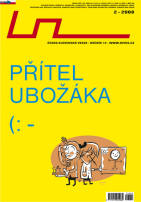

















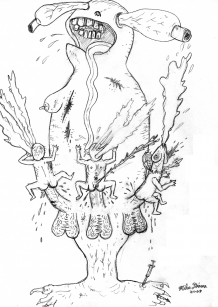




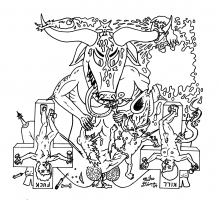
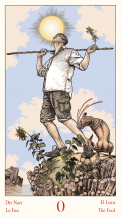

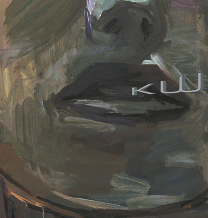


 New book by I.M.Jirous in English at our online bookshop.
New book by I.M.Jirous in English at our online bookshop.
Комментарии
Статья не была прокомментированаДобавить новый комментарий